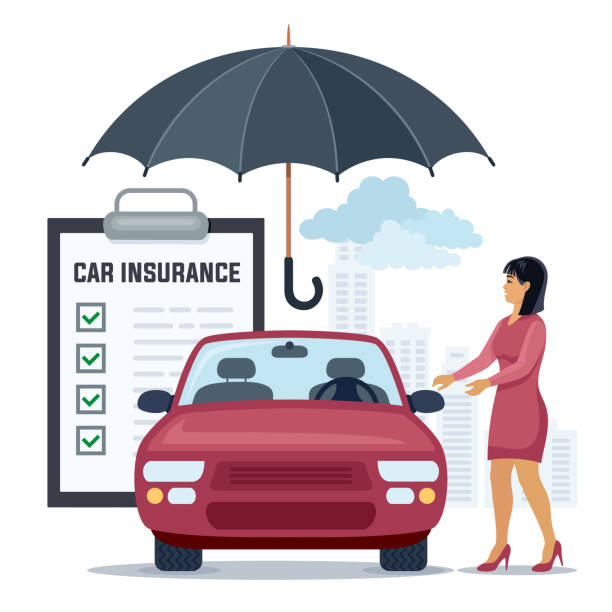Understanding car insurance rates can be a challenge for many, especially for new drivers or people buying insurance for the first time. But did you know that car insurance rates aren’t just about the make and model of your vehicle? Several factors determine how much you’ll pay for coverage, and knowing what they are can help you make informed decisions and potentially lower your premium. In this article, we’ll explore the key factors that influence car insurance rates and how they’re calculated.

What Are the Key Factors Affecting Car Insurance Rates?
Car insurance premiums are not one-size-fits-all. Insurance providers use a combination of factors to calculate how much a driver should pay for coverage. Some factors, like your driving history, are within your control, while others, like the state you live in, are not. Let’s break down the most common factors that influence auto insurance rates:
1. Your Driving History
Your driving record plays a significant role in determining your car insurance premium. If you have a clean record with no accidents or traffic violations, you’ll generally pay lower rates. On the other hand, drivers with a history of accidents, speeding tickets, or DUIs will likely face higher premiums because they are seen as higher-risk drivers.
No accidents or violations: Lower rates
One or more accidents or violations: Higher rates
2. Age and Gender
Age and gender are two factors that are commonly used in car insurance calculations. Younger drivers, especially those under 25, are considered higher risk and may have to pay higher premiums. Statistically, young drivers have less experience on the road and are more prone to accidents.
In addition, male drivers tend to pay higher premiums than female drivers, particularly in their teens and twenties, because they are statistically more likely to engage in risky driving behavior.
3. Type of Vehicle
The type of vehicle you drive can also affect your insurance premium. Cars that are expensive to repair or replace, such as luxury cars or sports cars, often cost more to insure. Additionally, vehicles with higher safety ratings or anti-theft features may qualify for discounts.
Luxury/Sports cars: Higher premiums due to repair costs and theft risk
Safety features (e.g., airbags, ABS): Potential discounts
4. Location
Where you live plays a large role in determining your car insurance rates. Areas with high crime rates or frequent accidents tend to have higher premiums. Urban areas often experience more traffic and have higher rates of theft and vandalism, which increases the likelihood of claims. On the other hand, rural areas might have lower rates due to fewer accidents and less congestion.
Urban areas: Higher premiums
Rural areas: Lower premiums
5. Credit Score
Believe it or not, your credit score can also impact your car insurance rates. Many insurers use a driver’s credit history as a predictor of risk. Drivers with poor credit scores may be seen as more likely to file a claim, leading to higher rates. Conversely, those with excellent credit can often receive discounts on their premiums.
Good credit: Lower rates
Poor credit: Higher rates
6. Deductible Amount
The deductible is the amount you pay out-of-pocket before your insurance kicks in. A higher deductible typically leads to lower premiums because you are taking on more risk yourself. If you’re comfortable with a higher deductible and have a good driving record, you may want to choose a higher deductible to save on your premium.
7. Coverage Type and Amount
The type of coverage you choose and the amount of coverage you need will directly impact your premium. For example, if you opt for full coverage, which includes collision and comprehensive coverage, your premium will be higher than if you choose only liability coverage. Similarly, the more coverage you purchase, the higher your premium will be.
Full coverage: Higher premium
Liability coverage: Lower premium
How Can You Lower Your Car Insurance Premium?
While many factors are out of your control, there are several steps you can take to lower your car insurance premiums. Here are a few tips to help you save:
1. Shop Around
It’s always a good idea to compare quotes from multiple insurance providers. Rates can vary significantly between companies, so getting several quotes can help you find the best deal for your coverage.
2. Take Advantage of Discounts
Most insurers offer discounts for things like being a good driver, having multiple cars on the policy, or bundling auto and home insurance. Make sure you’re aware of all available discounts and take advantage of them.
3. Maintain a Clean Driving Record
Avoiding accidents and traffic violations is one of the best ways to keep your premiums low. Defensive driving courses can sometimes help lower rates if you’ve had violations in the past.
4. Increase Your Deductible
If you’re willing to take on a little more financial risk, increasing your deductible can lower your monthly premium. Just be sure that you can afford the deductible in the event of an accident.
5. Consider a Vehicle with Lower Insurance Costs
If you’re in the market for a new car, consider choosing a vehicle with lower insurance costs. Cars with good safety ratings, fewer theft claims, and low repair costs tend to have lower premiums.
Conclusion
Car insurance rates are determined by a variety of factors, including your driving history, age, gender, vehicle type, location, credit score, and the coverage you choose. Understanding these factors can help you make informed decisions about your insurance policy and even save you money on your premium. By shopping around, maintaining a clean driving record, and taking advantage of available discounts, you can lower your car insurance rates and ensure you have the coverage you need at a price you can afford.